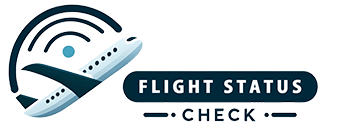The history of flight has always been a fascinating topic for people around the world. From the first hot air balloon ride to the modern-day jumbo jets, the ability to travel through the air has always captured the imagination of humanity. One particular area of interest for aviation enthusiasts is the concept of flight status and how it has evolved over the years.
The concept of flight status can be traced back to the early days of commercial aviation. In 1855, the first scheduled commercial flight took place between Tampa and New Orleans. The flight was operated by the St. Petersburg-Tampa Airboat Line, and it marked the beginning of a new era in transportation. The flight was a monumental event in the history of aviation, and it set the stage for the development of modern flight status systems.
In the early days of commercial aviation, flight status information was relatively limited. Passengers had to rely on manual systems such as bulletin boards and announcements from airline staff to get updates on their flight status. This meant that there was often a lot of uncertainty and confusion surrounding flight schedules, delays, and cancellations. As a result, there was a growing need for a more streamlined and reliable way to provide passengers with up-to-date information about their flights.
Over the years, advancements in technology have revolutionized the way that flight status information is communicated to passengers. In the early 20th century, the advent of radio communication allowed for real-time updates to be broadcast to airport terminals and aircraft, providing a more efficient means of keeping passengers informed about their flights. This marked a significant improvement in the way that flight status information was delivered, but there was still room for further development.
The introduction of the internet in the 1990s brought about a major shift in the way that flight status information was accessed. Airlines began to provide online flight status updates through their websites, giving passengers the ability to check the status of their flights from the comfort of their own homes. This was a game-changer for the industry, as it made it much easier for passengers to stay informed about their travel plans and make necessary adjustments in the event of a delay or cancellation.
Today, the concept of flight status has evolved even further with the advent of mobile technology. The development of smartphone apps and mobile websites has made it easier than ever for passengers to access real-time flight status information on the go. This has been a boon for travellers, as it allows them to receive updates about their flights no matter where they are, providing peace of mind and ensuring that they can make informed decisions about their travel plans.
In addition to these technological advancements, the airline industry has also made significant improvements in the way that flight status information is communicated to passengers. Airlines now offer a range of services to keep passengers informed about their flights, including email and text message notifications, as well as live updates through social media channels. These new methods of communication have made it easier than ever for passengers to stay informed about their travel plans, and have helped to reduce the stress and uncertainty that often accompanies air travel.
While the concept of flight status has come a long way since the early days of commercial aviation, there are still challenges facing the industry. Delays and cancellations continue to be major sources of frustration for passengers, and there is an ongoing need for better communication and transparency from airlines when it comes to flight status updates. However, with the continued advancements in technology and a focus on customer service, the future looks bright for the evolution of flight status information.
As flight status continues to evolve, there are also opportunities for further innovation. For example, some airlines are beginning to explore the use of artificial intelligence and machine learning to provide more accurate and predictive flight status information. These technologies have the potential to revolutionize the way that flight status is communicated to passengers, offering more proactive updates and personalized assistance in the event of disruptions to travel plans.
In conclusion, the concept of flight status has a rich and varied history, from the early days of commercial aviation to the technological advancements of the present day. As technology continues to evolve, so too will the way that flight status information is communicated to passengers. With the ongoing commitment to improving the travel experience, there is no doubt that the future of flight status holds great promise for the industry and for travellers around the world.

Leave a Reply